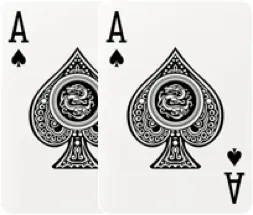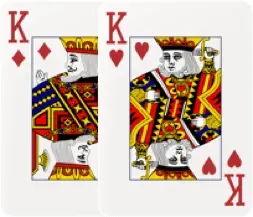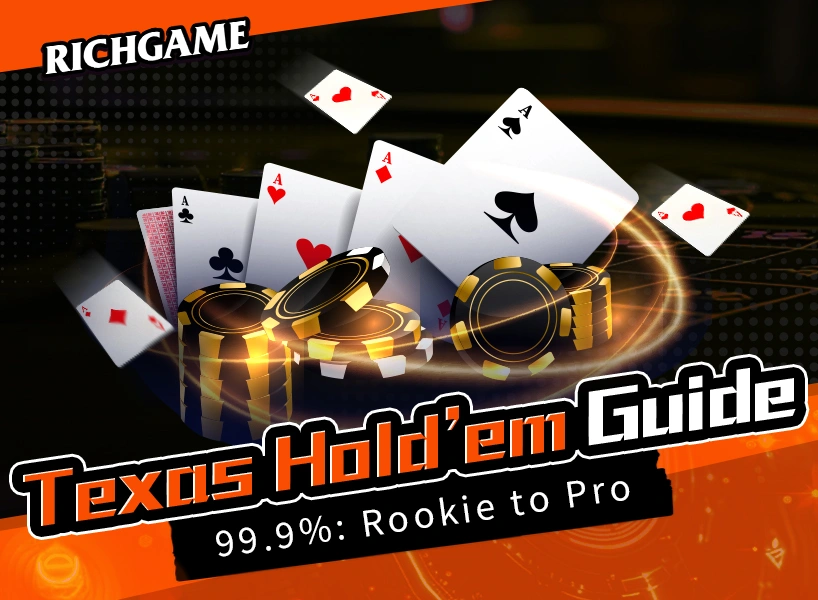Blackjack Card Counting Tutorial
Blackjack (also known as "Twenty-One") is a popular card game. The goal is to have a hand value as close to 21 as possible without exceeding it. In the game, number cards are worth their face value, face cards are worth 10 points, and Aces can be worth either 1 or 11 points.
In blackjack, both the player and the dealer draw cards in turn. The player can choose to "hit" (draw another card) or "stand" (keep current hand). If the player busts (goes over 21), they lose. The dealer must follow specific rules, usually drawing cards until their total is at least 17, then they must stand. If neither the player nor the dealer busts, then their hands are compared — the one with the higher hand wins. If both have the same value, it’s a push (tie).
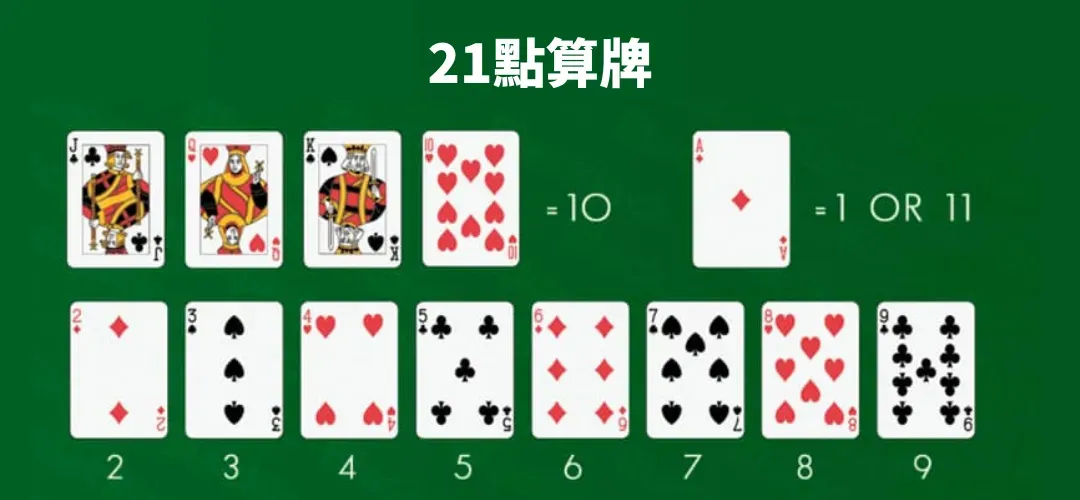
Card Values and Counting Rules
| Card Face | Point Value and Explanation |
|---|---|
| Cards 2–9 | Counted at face value. |
| Cards 10, J, Q, K | All counted as 10 points (denoted as “T” for “Ten”). |
| Ace (A) | Can count as 1 or 11. Always chosen to keep the total hand value under or equal to 21. (e.g., 10+A=21; 5+J+A=16) |
Master These 7 Tips to Understand Blackjack Rules
There are many variations of blackjack, but the core rules stay the same.
- Each game is played between one dealer and multiple players.
- Each player is dealt two cards at the beginning. The dealer shows one card face up and keeps the other face down.
- Players and the dealer aim to get as close to 21 as possible without exceeding it.
- Players act first. They can choose to hit or stand. If they bust, they lose instantly.
- Once all players have finished their turns, the dealer reveals their face down card. The dealer then hits until reaching at least 17, otherwise stands.
- If the dealer busts, all remaining players win. If the dealer and a player have the same hand value, it is a push.
- The higher hand between the player and the dealer wins.
※ Note: In blackjack, the value of an Ace can be either 1 or 11. Players choose its value based on their hand.
Blackjack Payouts - Special Rules (Example: OB Live Dealer)
| Main Game | Payout |
|---|---|
| Main Bet | 1:1 |
| Insurance | 1:2 |
| Blackjack | 1:1.5 |
Icons | 21+3 Side Bet | Payout |
|---|---|---|
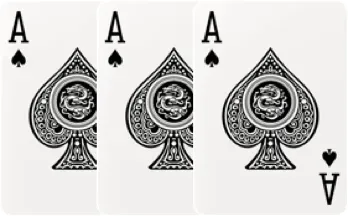 | Suited Trips | 1:100 |
Straight Flush | 1:40 | |
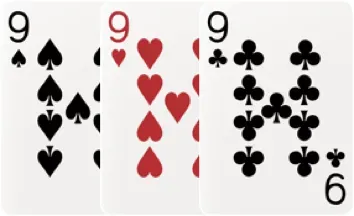 | Three of a Kind | 1:30 |
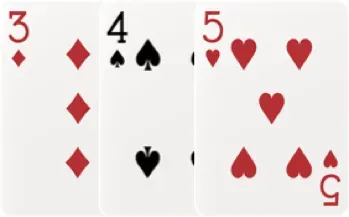 | Straight | 1:10 |
 | Flush | 1:5 |
Icon | Perfect Pair Side Bet | Payout |
|---|---|---|
| Perfect Pair | 1:25 |
| Colored Pair | 1:12 |
 | Mixed Pair | 1:6 |
- Insurance: When the dealer's upcard is an Ace, the player may place an insurance bet up to half their original bet, wagering that the dealer has a Blackjack. If the dealer does not have Blackjack, the insurance is lost immediately. If the dealer does have Blackjack, the insurance pays 2 to 1.
- Double Down: If the player's first two cards add up to 11, they may choose to double their bet. After doubling, only one more card will be drawn. Some versions of the game allow doubling on totals of 10, or even on any total.
- Split: When the player's first two cards are of equal value, they may split them into two hands and place an additional bet equal to the original. If Aces are split, only one additional card is dealt to each Ace, with no further hits allowed. Often, resplitting is not permitted.
- Pairs Side Bet: This side bet is placed alongside the main bet. If the player’s first two cards form a pair, payouts are made as follows: 25x for a Perfect Pair (same rank and suit), 12x for a Colored Pair (same rank and color), 6x for a Mixed Pair (same rank, different color and suit).
- Blackjack: Also called "Natural Blackjack." If the player’s first two cards are an Ace and a 10-point card (10, J, Q, or K), it is considered a Blackjack and typically pays 3 to 2 (sometimes 6 to 5 depending on rules).
``` 如果您後續還有其他片段需要轉換,歡迎繼續提供!
- Five-Card Charlie: If a player draws cards until holding five without busting, it's called a Five-Card Charlie (considered a natural hand), and that player wins 3 times the bet from the dealer.
- Straight: A side bet area on the table. Players may place a 21+3 bet along with their main wager. If the dealer’s first card and the player’s first two cards form a consecutive sequence, it pays 10 to 1.
- Flush: A side bet area on the table. Players may place a 21+3 bet along with their main wager. If the dealer’s first card and the player’s first two cards are all of the same suit, it pays 5 to 1.
- Three of a Kind: A side bet area on the table. Players may place a 21+3 bet along with their main wager. If the dealer’s first card and the player’s first two cards are of the same rank, it pays 30 to 1.
- Straight Flush: A side bet area on the table. Players may place a 21+3 bet along with their main wager. If the dealer’s first card and the player’s first two cards form a suited sequence, it pays 40 to 1.
- Suited Three of a Kind: A side bet area on the table. Players may place a 21+3 bet along with their main wager. If the dealer’s first card and the player’s first two cards are of the same suit and same rank, it pays 100 to 1; this can occur simultaneously with a Blackjack.
- Push: If neither the dealer nor players bust and both have the same total or a Blackjack, it’s a push and the player’s original bet is returned.
- Surrender: Before any cards are drawn, the player can choose to surrender and take back half the bet—commonly known as "surrender and lose half."
Blackjack Terminology
If you’re new to Blackjack, understanding key terms will help you get up to speed faster. Here are 12 commonly used terms to enhance your gameplay experience at the table.
| Common Blackjack Terms | Description |
|---|---|
| Hit | When the player wants another card in hopes of beating the dealer’s hand. |
| Stand | The player decides not to take more cards because their current hand is sufficient. |
| Split | When the initial two cards are the same value, the player can split them into two hands and place a bet on each. |
| Bust | When a hand exceeds 21, the player loses and must reveal all cards; the bet goes to the dealer. |
| Insurance | If the dealer’s upcard is an Ace, the player may bet half their original wager that the dealer has Blackjack. |
| Double Down | When the total of the first two cards is 11, players can choose to double their bet and take one more card. |
| Surrender | If the player believes their hand is weak, they may forfeit and recover half of their bet. |
| Push | When both the dealer and player have the same total, the player’s initial wager is returned. |
| Blackjack | A hand containing an Ace and a 10-point card (10, Jack, Queen, or King). |
| Straight | A hand made of “6, 7, and 8”, totaling 21 points and paying 3 to 1. |
| Triple Sevens | A hand made of three sevens totaling 21, and pays 3 to 1. |
| Five-Card Charlie | If the player takes five cards without busting, the dealer pays 3 times the bet. |

Master Blackjack with These Basic Strategies
Blackjack is a game that involves skill. Below are some basic strategies to help improve your odds when playing:
- If your hand total is below 17, you should hit. At this range, you're more likely to improve your hand than bust.
- If your hand is between 17 and 20, you should stand. Here, you're more likely to win or push than bust.
- When you have an Ace and your hand totals 11, be cautious. If the Ace shifts to a value of 1 to avoid busting, you might lose more hands.
- If your hand totals more than 11 but no more than 17, you should hit. Drawing a 10 would give you a better chance of beating the dealer.
- When the dealer’s face-up card is a 4, 5, or 6, you should hit. Dealers are more likely to bust in this situation.
- When the dealer shows a 2, 3, or 7, it’s better to stand. The dealer has a better chance to win with those cards.
- When the dealer shows an Ace, you should hit. There’s still a chance for you to win.
※ Remember, these strategies serve as general guidelines; actual decisions should be made based on the specific situation at the table.
Blackjack Card Counting – High-Low Strategy
Keep a running count of the cards revealed by the dealer using a designated score value for each card. The card values are assigned as follows:
Blackjack Card Counting Basics | |||
Card Value | 以下是已轉換為英文的內容,並完全保留原始 HTML 標籤與結構: 2, 3, 4, 5, 6 | 7, 8, 9 | 10, J, Q, K, A |
Score | +1 | +0 | -1 |
Use the score values from the chart above to total the cards that have already been dealt. The result could be positive or negative:
- If the total is negative, it means most high cards have already been dealt, so there are more low cards left in the shoe.
- If the total is positive, it indicates that more high cards remain in the shoe.
If there are more low cards left in the shoe and your hand total is under 17, you may choose to hit and draw another card.
House Edge for Various Casino Games
| Game Type | House Edge |
|---|---|
| American Roulette | 5.26% |
| Baccarat | 1.01% - 15.75% |
| Blackjack | 0.5% |
| Craps | 0 - 16.67% |
| Lottery | 20% - 40% |
| Slot Machines | 2% - 15% |
| Texas Hold'em | 2.36% |
| Sic Bo | 2.78 - 33.33% |
Even when a player uses optimal strategy in blackjack, the house still maintains a 0.5% edge—meaning on average, you lose $5 for every $1,000 bet.
This advantage comes from several key factors:
- Dealer acts last: After all players have finished their turns, the dealer draws based on fixed rules, and can win if players bust.
- Dealer avoids busting: The dealer adjusts their actions according to strategy, minimizing risk and increasing their chance to win.
- Player busts: Players may bust due to greed or aggressive play, handing the win to the dealer.
- Dealer has game knowledge: The dealer can anticipate betting patterns and behaviors, giving them a strategic advantage.
Understanding Online Blackjack from International Casino Rules
Blackjack is a popular card game where the objective is to get as close to 21 points as possible without exceeding it.
The rules of blackjack are as follows:
- Both the player and dealer are dealt two cards.
- The player acts first, choosing to hit or stand.
- If the player chooses to hit, they receive another card. If the total reaches or exceeds 21, they bust and lose automatically.
- The player can choose to hit multiple times or stand when they feel satisfied with their total.
- Once all players have completed their turn, the dealer reveals their second card. They must follow set rules—for example, hit when the total is below 17 and stand otherwise.
- If the dealer’s total is 21 or higher, they bust, and all remaining players win.
- Compare the player’s and dealer’s totals—the higher total wins. If both are equal, the round is a tie.


